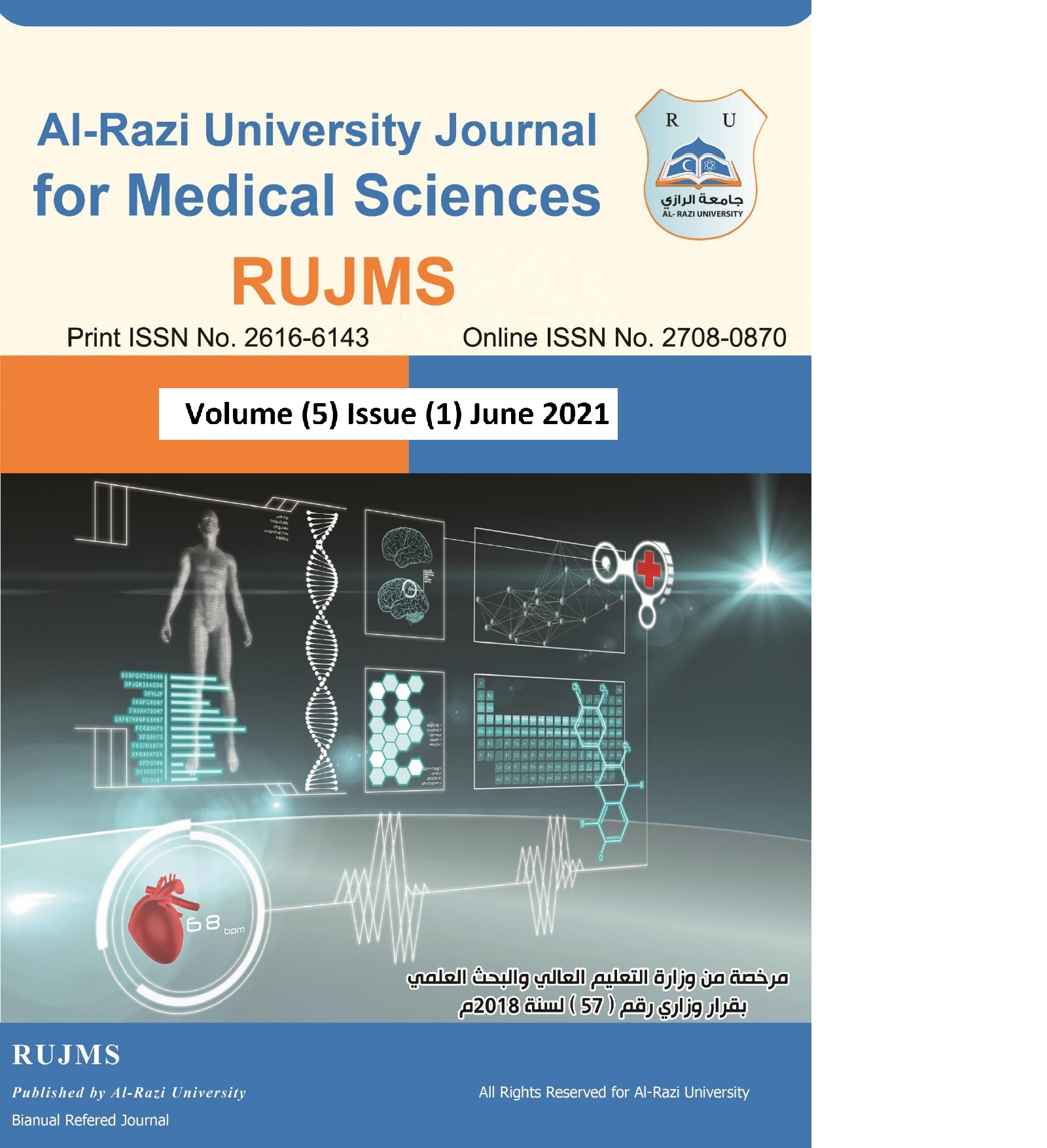Prevalence and Mortality Predictors of Venous Thromboembolism Among 48 Model Hospital Patients (2016-2020)
Abstract
الخلفية: تعتبر الجلطة الوريدية العميقة (VTE) ثالث أكثر الأمراض الوعائية انتشارًا، وتتسبب في أثر كبير على مرضى الإصابة والوفيات. على الرغم من فعاليتها، إلا أن الوقاية من الجلطات بناءً على الأدلة لا تزال غير مستخدمة بشكل كاف في العديد من البلدان، بما في ذلك اليمن. الأهداف: نهدف إلى تقدير انتشار ومعدلات الوفيات المتوقعة لـ VTE بين مرضى 48 مستشفى نموذجي خلال خمس سنوات (2016-2020)، وتقييم مدى تلقي مرضى VTE في هذا المستشفى النموذجي للوقاية المناسبة من الجلطات. النتائج: شملت دراستنا 151 حالة VTE مؤكدة. كان ثلاثة أرباع المرضى من الذكور، بمعدل 112 مريضًا (74.2%). كانت العمر المتوسط 30 عامًا مع نطاق بين الربعين 23-38 عامًا. أقل من نصف المرضى كانوا دون سن 30 عامًا، بنسبة 54.3%. كان أكثر من نصفهم من مرضى الصدمات بعد الحرب بنسبة 56.3%. كانت أكثر العوامل الخطر شيوعًا هي الحركة المحدودة، تليها إجراء جراحة كبرى، ثم الصدمات. كان انتشار VTE خلال خمس سنوات 0.53%. كانت الجلطة الوريدية العميقة في الساق السفلية القريبة (L.L. DVT)، وانسداد الشريان الرئوي (PE)، والجلطة الوريدية العميقة في الطرف العلوي أكثر أنواع VTE شيوعًا بين المرضى لدينا. لم يتلق سوى 40% من مرضى VTE الوقاية المناسبة. كان معدل الوفيات 7.3%. أظهرت الدراسة أن المرضى الذين يعانون من العدوى، والذين يستخدمون الوقاية من الجلطات بشكل غير كاف، والذين يعانون من اضطرابات تخثر الدم والنزف كعوائق للعلاج، والذين لديهم عدد صفائح دموية منخفض عند القبول، والذين لديهم نسبة كرياتينين في الدم عالية عند القبول كانوا أكثر عرضة للوفاة بمعدلات تصل إلى 5، 8، 1.9، 7.7، 9.5، و 13.7 مرة على التوالي بين مرضى VTE في مستشفى النموذج 48. الاستنتاج: تبرز نتائج دراستنا أن العلاج بالوقاية من الجلطات كان غير مستخدم بشكل كاف في مرضى مستشفى النموذج 48، مما يشير إلى الفجوة بين الممارسة السريرية والإرشادات الطبية. لذا، كان انتشار VTE مرتفعًا بين مرضى مستشفى النموذج 48. العدوى، وعدم استخدام الوقاية من الجلطات بشكل كاف، واضطرابات تخثر الدم والنزف كعوائق للعلاج، والصفائح الدموية المنخفضة عند القبول، والكرياتينين الدموي المرتفع عند القبول كانت جميعها عوامل مستقلة متوقعة للوفاة بين مرضى VTE في مستشفى النموذج 48.

